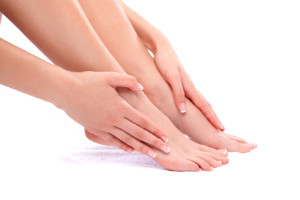
Bunions and Flat Footers
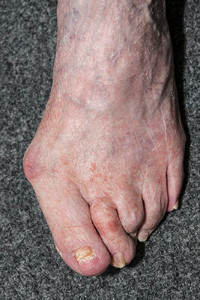 According to a surgeon on the medical staff of Lee Health, “The term bunion really implies a bump on the inside portion of the foot just behind the big toe joint.” Bunions are extremely common and some people are at a higher risk of developing them compared to others. Podiatrists say that people with flat feet are more likely to develop bunions than those with normal arches in their feet. Many podiatrists have come to the realization that bunion removal surgery isn’t very effective for those with flat feet, because the arch in the foot needs to be corrected in order to prevent more bunions from developing in the future.
According to a surgeon on the medical staff of Lee Health, “The term bunion really implies a bump on the inside portion of the foot just behind the big toe joint.” Bunions are extremely common and some people are at a higher risk of developing them compared to others. Podiatrists say that people with flat feet are more likely to develop bunions than those with normal arches in their feet. Many podiatrists have come to the realization that bunion removal surgery isn’t very effective for those with flat feet, because the arch in the foot needs to be corrected in order to prevent more bunions from developing in the future.
If you are suffering from bunions, contact Dr. Jordan Rachlin of Monroe Foot Care. Our doctor can provide the care you need to keep you pain-free and on your feet.
What is a Bunion?
A bunion is formed of swollen tissue or an enlargement of boney growth, usually located at the base joint of the toe that connects to the foot. The swelling occurs due to the bones in the big toe shifting inward, which impacts the other toes of the foot. This causes the area around the base of the big toe to become inflamed and painful.
Why do Bunions Form?
Genetics – Susceptibility to bunions are often hereditary
Stress on the feet – Poorly fitted and uncomfortable footwear that places stress on feet, such as heels, can worsen existing bunions
How are Bunions Diagnosed?
Doctors often perform two tests – blood tests and x-rays – when trying to diagnose bunions, especially in the early stages of development. Blood tests help determine if the foot pain is being caused by something else, such as arthritis, while x-rays provide a clear picture of your bone structure to your doctor.
How are Bunions Treated?
- Refrain from wearing heels or similar shoes that cause discomfort
- Select wider shoes that can provide more comfort and reduce pain
- Anti-inflammatory and pain management drugs
- Orthotics or foot inserts
- Surgery
If you have any questions, please feel free to contact our office located in Monroe, NY. We offer the newest diagnostic and treatment technologies for all your foot care needs.
Read more about BunionsFinding the Perfect Shoe for You
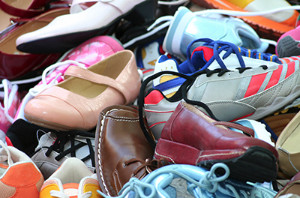 It is crucial for people of all ages to have properly fitting shoes. You should always try on shoes while in the shoestore in order to make sure you are getting the right fit. A new pair of shoes should never pinch your feet, and there should be at least one finger length of space at the top of the shoe. Additionally, your heel should have a firm positioning inside of the shoe. It is advised that the shoe buyer takes a walk around in the store for several minutes before making a purchase, in order to know if the shoes fit properly.
It is crucial for people of all ages to have properly fitting shoes. You should always try on shoes while in the shoestore in order to make sure you are getting the right fit. A new pair of shoes should never pinch your feet, and there should be at least one finger length of space at the top of the shoe. Additionally, your heel should have a firm positioning inside of the shoe. It is advised that the shoe buyer takes a walk around in the store for several minutes before making a purchase, in order to know if the shoes fit properly.
Finding a properly-fitting shoe is important in reducing injuries and preventing foot problems. For more information about treatment, contact Dr. Jordan Rachlin from Monroe Foot Care. Our doctor will treat your foot and ankle needs.
Proper Shoe Fitting
A common concern when it comes to foot health, having properly fitted shoes can help prevent injuries to the foot. Out feet affect our posture and gait, which in turn affects the biomechanics and overall bodily structure. With 33 joints, 26 bones, and over 100 ligaments, the potential for serious injury is much greater than one realizes. Although the feet cease growth in adulthood, they still change shape as they mature. Here are some factors to consider when it comes to investing in proper fitting shoes:
- Be sure the shoes fit correctly right away
- Ensure the ball of your foot fits comfortably in the widest portion of the shoes
- Even though they may look fashionable, improper fitting shoes can either create adverse conditions or exacerbate existing ones you may already have
- Walk along a carpeted surface to ensure the shoes comfortably fit during normal activity
Keeping in mind how shoes fit the biomechanics of your body, properly-fitting shoes are vitally important. Fortunately, it is not difficult to acquire footwear that fits correctly. Be sure to wear shoes that support the overall structure of your body. Do your feet a favor and invest in several pairs of well-fitted shoes today.
If you have any questions please feel free to contact our office located in Monroe, NY. We offer the newest diagnostic and treatment technologies for all your foot and ankle needs.
Read more about Proper Shoe FittingManaging Blisters
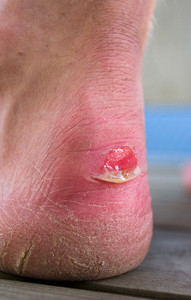 Those who spend a large amount of time putting pressure on their feet are prone to developing blisters, or pockets of fluid between layers of skin which develop due to friction. Minor blisters should not be popped, and instead left alone and covered to provide cushioning and avoid further friction. Prevent the development of blisters by wearing proper-fitting shoes and socks that provide ample comfort and support. Be sure to treat blisters immediately after discovery to avoid pain and disruption of daily activities. If a blister ruptures, immediately disinfect the area and treat it with antibiotic ointment. Consult with a doctor if the pain persists or there is any sign of infection.
Those who spend a large amount of time putting pressure on their feet are prone to developing blisters, or pockets of fluid between layers of skin which develop due to friction. Minor blisters should not be popped, and instead left alone and covered to provide cushioning and avoid further friction. Prevent the development of blisters by wearing proper-fitting shoes and socks that provide ample comfort and support. Be sure to treat blisters immediately after discovery to avoid pain and disruption of daily activities. If a blister ruptures, immediately disinfect the area and treat it with antibiotic ointment. Consult with a doctor if the pain persists or there is any sign of infection.
Blisters are prone to making everyday activities extremely uncomfortable. If your feet are hurting, contact Dr. Jordan Rachlin of Monroe Foot Care. Our doctor can provide the care you need to keep you pain-free and on your feet.
Foot Blisters
Foot blisters develop as a result of constantly wearing tight or ill-fitting footwear. This happens due to the constant rubbing from the shoe, which can often lead to pain.
What are Foot Blisters?
A foot blister is a small fluid-filled pocket that forms on the upper-most layer of the skin. Blisters are filled with clear fluid and can lead to blood drainage or pus if the area becomes infected.
How do Blisters Form?
Blisters on the feet are often the result of constant friction of skin and material, usually by shoe rubbing. Walking in sandals, boots, or shoes that don’t fit properly for long periods of time can result in a blister. Having consistent foot moisture and humidity can easily lead to blister formation.
Prevention & Treatment
It is important to properly care for the affected area in order to prevent infection and ease the pain. Do not lance the blister and use a Band-Aid to provide pain relief. Also, be sure to keep your feet dry and wear proper fitting shoes. If you see blood or pus in a blister, seek assistance from a podiatrist.
If you have any questions, please feel free to contact our office located in Monroe, NY. We offer the newest diagnostic and treatment technologies for all your foot care needs.
Read more about Blisters on the FeetDifferent Types of Arthritis
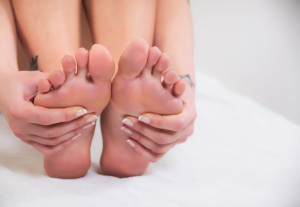 Arthritis is a condition that many people are familiar with but that not many fully understand. Successful treatment of the condition depends on the correct diagnosis, and arthritis can take on three different types: osteoarthritis, rheumatoid arthritis, and psoriatic arthritis. Each type of arthritis has its own various symptoms and treatments. If you are suffering from arthritis in your feet, consult with your podiatrist to determine the right diagnosis and the best treatment.
Arthritis is a condition that many people are familiar with but that not many fully understand. Successful treatment of the condition depends on the correct diagnosis, and arthritis can take on three different types: osteoarthritis, rheumatoid arthritis, and psoriatic arthritis. Each type of arthritis has its own various symptoms and treatments. If you are suffering from arthritis in your feet, consult with your podiatrist to determine the right diagnosis and the best treatment.
Arthritis can be a difficult condition to live with. If you are seeking treatment, contact Dr. Jordan Rachlin from Monroe Foot Care. Our doctor can provide the care you need to keep you pain-free and on your feet.
Arthritic Foot Care
Arthritis is a joint disorder that involves the inflammation of different joints in your body, such as those in your feet. Arthritis is often caused by a degenerative joint disease and causes mild to severe pain in all affected areas. In addition to this, swelling and stiffness in the affected joints can also be a common symptom of arthritis.
In many cases, wearing ill-fitting shoes can worsen the effects and pain of arthritis. Wearing shoes that have a lower heel and extra room can help your feet feel more comfortable. In cases of rheumatoid arthritis, the arch in your foot may become problematic. Buying shoes with proper arch support that contour to your feet can help immensely.
Alleviating Arthritic Pain
- Exercises that stretch the foot can prevent further pain and injury and increase mobility
- Most of the pain can be alleviated with anti-inflammatory drugs, heat, and topical medications
- Massages can help temporarily alleviate pain.
It is best to see your doctor for the treatment that is right for your needs and symptoms. Conditions vary, and a podiatrist can help you determine the right method of care for your feet.
If you have any questions, please feel free to contact our office located in Monroe, NY. We offer the newest diagnostic tools and technology to treat your foot and ankle needs.
Read more about Arthritic Foot CareAchilles Tendon Injuries on the Rise
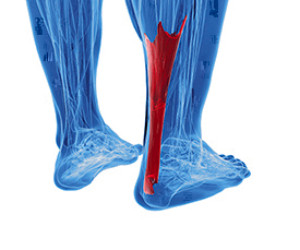 Many podiatrists are suspecting that Achilles tendon injuries will be on the rise especially amongst those aged 30 to 50. Every year, approximately 230,000 Achilles tendon injuries occur in the United States. While Achilles tendon injuries are typically common among young athletes, professionals suspect that the number of middle-aged and older patients sustaining Achilles tendon injuries is rising because they are staying active longer. The severity of Achilles tendon injuries can vary between mild to moderate. Injuries of this degree typically cause pain and stiffness but can heal on their own. Surgery may be necessary for more severe cases, such as the tearing or rupturing of the Achilles tendon.
Many podiatrists are suspecting that Achilles tendon injuries will be on the rise especially amongst those aged 30 to 50. Every year, approximately 230,000 Achilles tendon injuries occur in the United States. While Achilles tendon injuries are typically common among young athletes, professionals suspect that the number of middle-aged and older patients sustaining Achilles tendon injuries is rising because they are staying active longer. The severity of Achilles tendon injuries can vary between mild to moderate. Injuries of this degree typically cause pain and stiffness but can heal on their own. Surgery may be necessary for more severe cases, such as the tearing or rupturing of the Achilles tendon.
Achilles tendon injuries need immediate attention to avoid future complications. If you have any concerns, contact Dr. Jordan Rachlin of Monroe Foot Care. Our doctor can provide the care you need to keep you pain-free and on your feet.
What is the Achilles Tendon?
The Achilles tendon is a tendon that connects the lower leg muscles and calf to the heel of the foot. It is the strongest tendon in the human body and is essential for making movement possible. Because this tendon is such an integral part of the body, any injuries to it can create immense difficulties and should immediately be presented to a doctor.
What are the symptoms of an Achilles Tendon Injury?
There are various types of injuries that can affect the Achilles tendon. The two most common injuries are Achilles tendinitis and ruptures of the tendon.
Achilles Tendinitis Symptoms
- Inflammation
- Dull to severe pain
- Increased blood flow to the tendon
- Thickening of the tendon
Rupture Symptoms
- Extreme pain and swelling in the foot
- Total immobility
Treatment and Prevention
Achilles tendon injuries are diagnosed by a thorough physical evaluation, which can include an MRI. Treatment involves rest, physical therapy, and in some cases, surgery. However, various preventative measures can be taken to avoid these injuries, such as:
- Thorough stretching of the tendon before and after exercise
- Strengthening exercises like calf raises, squats, leg curls, leg extensions, leg raises, lunges, and leg presses
If you have any questions please feel free to contact our office located in Monroe, NY. We offer the newest diagnostic tools and technology to treat your foot and ankle needs.
Read more about What are Achilles Tendon InjuriesWhat Are Plantar Warts?
 There are over 100 different varieties of HPV, or human papilloma virus. Nearly 12% of the global population have had warts at one time, and plantar warts are but one of these types. They all share one basic characteristic, they have the ability to infect skin cells. Many people, when they hear the term HPV, think that it refers to genital warts. But this is not the case, and HPV can manifest itself in many different forms. Plantar warts occur on the feet, typically on the palms or the soles. They can be flat or raised, and usually occur in dry, cracked areas of the foot. Treatments vary in scope and effectiveness. If you think you may have a plantar wart, talk to your podiatrist and go through the treatment options available.
There are over 100 different varieties of HPV, or human papilloma virus. Nearly 12% of the global population have had warts at one time, and plantar warts are but one of these types. They all share one basic characteristic, they have the ability to infect skin cells. Many people, when they hear the term HPV, think that it refers to genital warts. But this is not the case, and HPV can manifest itself in many different forms. Plantar warts occur on the feet, typically on the palms or the soles. They can be flat or raised, and usually occur in dry, cracked areas of the foot. Treatments vary in scope and effectiveness. If you think you may have a plantar wart, talk to your podiatrist and go through the treatment options available.
Plantar warts can be very uncomfortable. If you need your feet checked, contact Dr. Jordan Rachlin from Monroe Foot Care. Our doctor will assist you with all of your foot and ankle needs.
About Plantar Warts
Plantar warts are the result of HPV, or human papillomavirus, getting into open wounds on the feet. They are mostly found on the heels or balls of the feet.
While plantar warts are generally harmless, those experiencing excessive pain or those suffering from diabetes or a compromised immune system require immediate medical care. Plantar warts are easily diagnosed, usually through scraping off a bit of rough skin or by getting a biopsy.
Symptoms
- Legions on the bottom of your feet, usually rough and grainy
- Hard or thick callused spots
- Wart seeds, which are small clotted blood vessels that look like little black spots
- Pain, discomfort, or tenderness of your feet when walking or standing
Treatment
- Freezing
- Electric tool removal
- Laser Treatment
- Topical Creams (prescription only)
- Over-the-counter medications
To help prevent developing plantar warts, avoid walking barefoot over abrasive surfaces that can cause cuts or wounds for HPV to get into. Avoiding direct contact with other warts, as well as not picking or rubbing existing warts, can help prevent the further spread of plantar warts. However, if you think you have developed plantar warts, speak to your podiatrist. He or she can diagnose the warts on your feet and recommend the appropriate treatment options.
If you have any questions please feel free to contact our office located in Monroe, NY. We offer the newest diagnostic and treatment technologies for all your foot and ankle needs.
Read more about All About Plantar WartsAvoid High Heels Taller Than 2-3 Inches
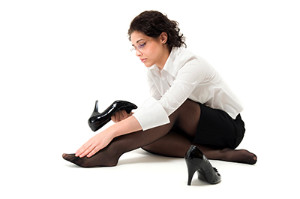 It is a commonly known fact that high heels are bad for you, with prolonged wearing leading to both a multitude of short-term problems such as corns and long-term problems such as bunions and back pain. Although women’s shoes like high heels are a popular fashion staple, they are actually considered improperly-fitting shoes that are bad for your heels, arches, and overall foot health. It is suggested to avoid heels that are higher than 2 to 3 inches, and to look for heels that have enough room in the front so that you are able to move your toes.
It is a commonly known fact that high heels are bad for you, with prolonged wearing leading to both a multitude of short-term problems such as corns and long-term problems such as bunions and back pain. Although women’s shoes like high heels are a popular fashion staple, they are actually considered improperly-fitting shoes that are bad for your heels, arches, and overall foot health. It is suggested to avoid heels that are higher than 2 to 3 inches, and to look for heels that have enough room in the front so that you are able to move your toes.
High heels have a history of causing foot and ankle problems. If you have any concerns about your feet or ankles, contact Dr. Jordan Rachlin from Monroe Foot Care. Our doctor can provide the care you need to keep you pain-free and on your feet.
Effects of High Heels on the Feet
High heels are popular shoes among women because of their many styles and societal appeal. Despite this, high heels can still cause many health problems if worn too frequently.
Which parts of my body will be affected by high heels?
- Ankle Joints
- Achilles Tendon – May shorten and stiffen with prolonged wear
- Balls of the Feet
- Knees – Heels cause the knees to bend constantly, creating stress on them
- Back – They decrease the spine’s ability to absorb shock, which may lead to back pain. The vertebrae of the lower back may compress.
What kinds of foot problems can develop from wearing high heels?
- Corns
- Calluses
- Hammertoe
- Bunions
- Morton’s Neuroma
- Plantar Fasciitis
How can I still wear high heels and maintain foot health?
If you want to wear high heeled shoes, make sure that you are not wearing them every day, as this will help prevent long term physical problems. Try wearing thicker heels as opposed to stilettos to distribute weight more evenly across the feet. Always make sure you are wearing the proper shoes for the right occasion, such as sneakers for exercising. If you walk to work, try carrying your heels with you and changing into them once you arrive at work. Adding inserts to your heels can help cushion your feet and absorb shock. Full foot inserts or metatarsal pads are available.
If you have any questions please feel free to contact our office located in Monroe, NY. We offer the newest diagnostic and treatment technologies for all your foot and ankle needs.
Read more about Effect of High Heels on the FeetWhat to do About Calluses
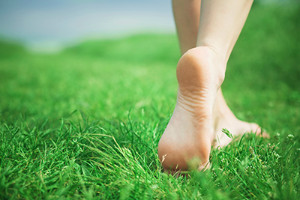 Among foot conditions, calluses and corns are often seen as some of the more harmless concerns. Regardless, if a callus does become troublesome, there are methods available for removal. Because calluses are essentially small areas of thick, hardened skin, softening calluses can help aid in their removal. Soaking the feet in warm water and avoiding using harsh soaps while washing can help maintain softness of the skin. Hard areas can also be buffed away using a pumice stone. If you are suffering from calluses and seek ways to remove them, consult with your podiatrist.
Among foot conditions, calluses and corns are often seen as some of the more harmless concerns. Regardless, if a callus does become troublesome, there are methods available for removal. Because calluses are essentially small areas of thick, hardened skin, softening calluses can help aid in their removal. Soaking the feet in warm water and avoiding using harsh soaps while washing can help maintain softness of the skin. Hard areas can also be buffed away using a pumice stone. If you are suffering from calluses and seek ways to remove them, consult with your podiatrist.
If you have any concerns regarding your feet and ankles, contact Dr. Jordan Rachlin of Monroe Foot Care. Our doctor will treat your foot and ankle needs.
Corns: What are they? And how do you get rid of them?
Corns can be described as areas of the skin that have thickened to the point of becoming painful or irritating. They are often layers and layers of the skin that have become dry and rough, and are normally smaller than calluses.
Ways to Prevent Corns
There are many ways to get rid of painful corns such as wearing:
- Well-fitting socks
- Comfortable shoes that are not tight around your foot
- Shoes that offer support
Treating Corns
Treatment of corns involves removing the dead skin that has built up in the specific area of the foot. Consult with Our doctor to determine the best treatment option for your case of corns.
If you have any questions please feel free to contact our office located in Monroe, NY. We offer the newest diagnostic and treatment technologies for all your foot and ankle needs.
Read more about Corns: What Are They, and How Do You Get Rid of ThemGeoff Swaim of Dallas Cowboys undergoes surgery
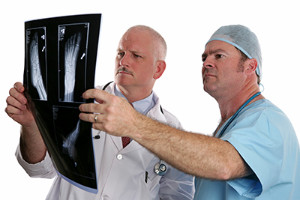 Geoff Swaim, tight end of the Dallas Cowboys, will most likely be out of play until the team’s training camp due to last week’s foot surgery. The injury itself was sustained during the Cowboys’ informal workouts last week at The Star. After suffering the injury, Swaim had a screw inserted into his foot to help secure the bones in place. He will most likely be back when the Cowboys return for training camp in Oxnard, California, in July. The tight end is no stranger to injuries and surgeries; last season, Swaim missed the final seven games due to a torn pectoral tendon that needed surgery. Swaim was able to make a full recovery since.
Geoff Swaim, tight end of the Dallas Cowboys, will most likely be out of play until the team’s training camp due to last week’s foot surgery. The injury itself was sustained during the Cowboys’ informal workouts last week at The Star. After suffering the injury, Swaim had a screw inserted into his foot to help secure the bones in place. He will most likely be back when the Cowboys return for training camp in Oxnard, California, in July. The tight end is no stranger to injuries and surgeries; last season, Swaim missed the final seven games due to a torn pectoral tendon that needed surgery. Swaim was able to make a full recovery since.
Foot surgery is sometimes necessary to treat a foot ailment. To learn more, contact Dr. Jordan Rachlin of Monroe Foot Care. Our doctor will assist you with all of your foot and ankle needs.
When Is Surgery Necessary?
Foot and ankle surgery is generally reserved for cases in which less invasive, conservative procedures have failed to alleviate the problem. Some of the cases in which surgery may be necessary include:
- Removing foot deformities like bunions and bone spurs
- Severe arthritis that has caused bone issues
- Cosmetic reconstruction
What Types of Surgery Are There?
The type of surgery you receive will depend on the nature of the problem you have. Some of the possible surgeries include:
- Bunionectomy for painful bunions
- Surgical fusion for realignment of bones
- Neuropathy decompression surgery to treat nerve damage
Benefits of Surgery
Although surgery is usually a last resort, it can provide more complete pain relief compared to non-surgical methods and may allow you to finally resume full activity.
Surgical techniques have also become increasingly sophisticated. Techniques like endoscopic surgery allow for smaller incisions and faster recovery times.
If you have any questions please feel free to contact our office located in Monroe, NY. We offer the newest diagnostic and treatment technologies for all your foot and ankle needs.
Read more about Foot SurgeryTruck Driver Lifestyle Problematic For Gout Sufferers
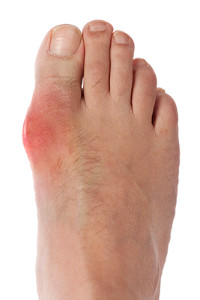 Gout, a form of arthritis that causes intense pain in the body’s joints, can be a particularly problematic condition for truck drivers due to their lifestyle and eating habits. While sedentariness is not a cause, eating purine-rich foods, such as meats, gravy, and beer, certainly is. Other factors include being overweight, diabetic, over the age of 45, having high cholesterol, hypertension, taking certain medications for said hypertension, and not drinking enough water. Prevention is key in combating gout, and this can be achieved by avoiding risk foods and staying hydrated.
Gout, a form of arthritis that causes intense pain in the body’s joints, can be a particularly problematic condition for truck drivers due to their lifestyle and eating habits. While sedentariness is not a cause, eating purine-rich foods, such as meats, gravy, and beer, certainly is. Other factors include being overweight, diabetic, over the age of 45, having high cholesterol, hypertension, taking certain medications for said hypertension, and not drinking enough water. Prevention is key in combating gout, and this can be achieved by avoiding risk foods and staying hydrated.
Gout is a foot condition that requires certain treatment and care. If you are seeking treatment, contact Dr. Jordan Rachlin from Monroe Foot Care. Our doctor will treat your foot and ankle needs.
What is Gout?
Gout is a type of arthritis caused by a buildup of uric acid in the bloodstream. It often develops in the foot, especially the big toe area, although it can manifest in other parts of the body as well. Gout can make walking and standing very painful and is especially common in diabetics and the obese.
People typically get gout because of a poor diet. Genetic predisposition is also a factor. The children of parents who have had gout frequently have a chance of developing it themselves.
Gout can easily be identified by redness and inflammation of the big toe and the surrounding areas of the foot. Other symptoms include extreme fatigue, joint pain, and running high fevers. Sometimes corticosteroid drugs can be prescribed to treat gout, but the best way to combat this disease is to get more exercise and eat a better diet.
If you have any questions please feel free to contact our office located in Monroe, NY. We offer the newest diagnostic and treatment technologies for all your foot and ankle needs.
Read more about Everything You Need to Know About GoutMore...
Tips for Shoe Shopping
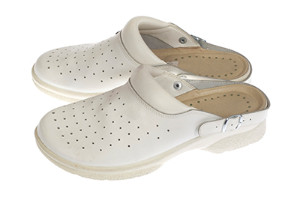 Shoe shopping is an activity that can affect one’s foot health more than many people realize. Finding a pair of proper-fitting shoes is an investment and the first step in maintaining optimal foot health. The question is: how do you find shoes that are well-fitting and offer support? Consider the following tips while shoe shopping. Complete your shoe shopping in the afternoon, as the feet naturally expand during the day. Be sure to wear the same type of socks that you plan to wear with your shoes, walk around in your shoes to determine how they feel while moving, trust your own comfort level, and examine the soles of the shoes to determine sturdiness and cushioning.
Shoe shopping is an activity that can affect one’s foot health more than many people realize. Finding a pair of proper-fitting shoes is an investment and the first step in maintaining optimal foot health. The question is: how do you find shoes that are well-fitting and offer support? Consider the following tips while shoe shopping. Complete your shoe shopping in the afternoon, as the feet naturally expand during the day. Be sure to wear the same type of socks that you plan to wear with your shoes, walk around in your shoes to determine how they feel while moving, trust your own comfort level, and examine the soles of the shoes to determine sturdiness and cushioning.
Finding a properly-fitting shoe is important in reducing injuries and preventing foot problems. For more information about treatment, contact Dr. Jordan Rachlin from Monroe Foot Care. Our doctor will treat your foot and ankle needs.
Proper Shoe Fitting
A common concern when it comes to foot health, having properly fitted shoes can help prevent injuries to the foot. Out feet affect our posture and gait, which in turn affects the biomechanics and overall bodily structure. With 33 joints, 26 bones, and over 100 ligaments, the potential for serious injury is much greater than one realizes. Although the feet cease growth in adulthood, they still change shape as they mature. Here are some factors to consider when it comes to investing in proper fitting shoes:
- Be sure the shoes fit correctly right away
- Ensure the ball of your foot fits comfortably in the widest portion of the shoes
- Even though they may look fashionable, improper fitting shoes can either create adverse conditions or exacerbate existing ones you may already have
- Walk along a carpeted surface to ensure the shoes comfortably fit during normal activity
Keeping in mind how shoes fit the biomechanics of your body, properly-fitting shoes are vitally important. Fortunately, it is not difficult to acquire footwear that fits correctly. Be sure to wear shoes that support the overall structure of your body. Do your feet a favor and invest in several pairs of well-fitted shoes today.
If you have any questions please feel free to contact our office located in Monroe, NY. We offer the newest diagnostic and treatment technologies for all your foot and ankle needs.
Read more about Proper Shoe FittingBiologic Drugs May Aid in Slowing Rheumatoid Arthritis
For those with rheumatoid arthritis, the risk of heart attacks is at least 60 percent higher than those without the condition “thought to be linked to the inflammation caused by the disease on affected joints.” As rheumatoid arthritis leads to the inflammation, swelling, and potential immobility of our body’s joints, there are several medical treatments such as biologic drugs that can be used to slow down the deterioration of the joints from this autoimmune disease. Researchers from the British Society for Rheumatology Biologics Register for Rheumatoid Arthritis (BSRBR-RA) conducted a study on rheumatoid arthritis patients, determining that tumor necrosis factor inhibitor (TNFi) drugs helped to eliminate the proteins that led to inflammation. These drugs reduced the risk of heart attacks by “almost 40 percent,” compared to those who were only taking synthetic disease modifying therapies (sDMARD), which are used to slow down the progression of deterioration of joints.
Because RA affects more than just your joints, including the joints in your feet and ankles, it is important to seek early diagnosis from your podiatrist if you feel like the pain in your feet might be caused by RA. For more information, contact Dr. Jordan Rachlin of Monroe Foot Care. Our doctor will assist you with all of your podiatric concerns.
What Is Rheumatoid Arthritis?
Rheumatoid Arthritis (RA) is an autoimmune disorder in which the body’s own immune system attacks the membranes surrounding the joints. Inflammation of the lining and eventually the destruction of the joint’s cartilage and bone occur, causing severe pain and immobility.
Rheumatoid Arthritis of the Feet
Although RA usually attacks multiple bones and joints throughout the entire body, almost 90 percent of cases result in pain in the foot or ankle area.
Symptoms
- Swelling and pain in the feet
- Stiffness in the feet
- Pain on the ball or sole of feet
- Joint shift and deformation
Diagnosis
Quick diagnosis of RA in the feet is important so that the podiatrist can treat the area effectively. Your doctor will ask you about your medical history, occupation, and lifestyle to determine the origin of the condition. Rheumatoid Factor tests help to determine if someone is affected by the disease.
If you have any questions please feel free to contact our office located in Monroe, NY. We offer the newest diagnostic and treatment technologies for all your foot and ankle needs.
Read more about Rheumatoid Arthritis in the FeetHFM Disease Found in Children in California
 Students at an elementary school in Desert Hot Springs, California were found to have contracted the virus Coxsackie, also known as hand, foot, and mouth disease. As the disease is highly communicable, a notification was sent out to parents of the students that could be exposed. The symptoms are rashes and blisters in the mouth, on the palms of the hands, and on the soles of the feet. It might be difficult to walk and there is typically an accompanying fever. If you develop blisters on your feet it is important that you try to keep them from rupturing, as the disease is spread through the fluid.
Students at an elementary school in Desert Hot Springs, California were found to have contracted the virus Coxsackie, also known as hand, foot, and mouth disease. As the disease is highly communicable, a notification was sent out to parents of the students that could be exposed. The symptoms are rashes and blisters in the mouth, on the palms of the hands, and on the soles of the feet. It might be difficult to walk and there is typically an accompanying fever. If you develop blisters on your feet it is important that you try to keep them from rupturing, as the disease is spread through the fluid.
When dealing with systemic disease of the feet, it is extremely important to check the affected areas routinely so that any additional problems are caught quickly. If you have any concerns about your feet and ankles contact Dr. Jordan Rachlin from Monroe Foot Care. Our doctor will assist you with all of your podiatric needs.
Systemic Diseases of the Feet
Systemic diseases affect the whole body, and symptoms usually are displayed in the feet. This condition can make a patient’s ability to walk unbearable. Systemic diseases include gout, diabetes mellitus, neurological disorders, and arthritis.
Gout – is caused by an excess of uric acid in the body. Common symptoms include pain, inflammation, and redness at the metatarsal/phalangeal joint of the base big toe. Gout can be treated by NSAIDs to relieve pain and inflammation, and other drugs that lower the acid levels in the body.
Diabetes mellitus – is an increase in the level of blood sugar that the body cannot counteract with its own insulin. Failure to produce enough insulin is a factor in Diabetes.
Diabetes of the Feet
Diabetic Neuropathy – may lead to damaged nerves and affect the feet through numbness and loss of sensation.
Peripheral Vascular Disease – can restrict the blood flow to the feet, and often times lead to amputation of the feet.
If you have any questions please feel free to contact our office located in Monroe, NY. We offer the newest diagnostic and treatment technologies for all your foot and ankle needs.
Read more about Systemic Diseases of the FootAvoiding Fractures in the Winter
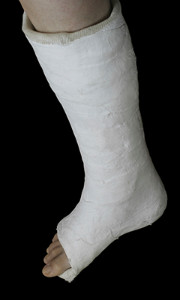 Getting from place to place during the winter can be treacherous. Whether driving in a car or traveling on foot, it is important to take precautions. When walking, make sure to take it slow. Ice can be lurking underfoot and being mindful of it can help keep you from taking a spill. For the elderly, this is especially important. According to Dr. Gudren Mirick from Hennepin County Medical Center, the most common injury from falls in the winter is an ankle fracture. Giving consideration to the type of shoes you are wearing is key. Winter boots are the best choice, but if you don’t have them, make sure that your shoes have good traction. Put away your heels until springtime, you might end up with a broken ankle.
Getting from place to place during the winter can be treacherous. Whether driving in a car or traveling on foot, it is important to take precautions. When walking, make sure to take it slow. Ice can be lurking underfoot and being mindful of it can help keep you from taking a spill. For the elderly, this is especially important. According to Dr. Gudren Mirick from Hennepin County Medical Center, the most common injury from falls in the winter is an ankle fracture. Giving consideration to the type of shoes you are wearing is key. Winter boots are the best choice, but if you don’t have them, make sure that your shoes have good traction. Put away your heels until springtime, you might end up with a broken ankle.
Broken ankles need immediate treatment. If you are seeking treatment, contact Dr. Jordan Rachlin from Monroe Foot Care. Our doctor can provide the care you need to keep you pain-free and on your feet.
Broken Ankles
A broken ankle is experienced when a person fractures their tibia or fibula in the lower leg and ankle area. Both of these bones are attached at the bottom of the leg and combine to form what we know to be our ankle.
When a physician is referring to a break of the ankle, he or she is usually referring to a break in the area where the tibia and fibula are joined to create our ankle joint. Ankles are more prone to fractures because the ankle is an area that suffers a lot of pressure and stress. There are some obvious signs when a person experiences a fractured ankle, and the following symptoms may be present.
Symptoms of a Fractured Ankle
- Excessive pain when the area is touched or when any pressure is placed on the ankle
- Swelling around the area
- Bruising of the area
- Area appears to be deformed
If you suspect an ankle fracture, it is recommended to seek treatment as soon as possible. The sooner you have your podiatrist diagnose the fracture, the quicker you’ll be on the way towards recovery.
If you have any questions, please feel free to contact our office located in Monroe, NY. We offer the newest diagnostic and treatment technologies for all your foot care needs.
Read more about All About Broken AnklesLocation & Hours
1200 Rt 208 Suite 5
Monroe, NY 10950
Directions
Phone: (845) 782-4455
Fax: (800) 968-8601
Monday through Thursday - 8am to 6pm
Friday - 8am - 3pm
Services
Foot and Ankle Pain- Ingrown toenail care
- Sport Medicine
- Medical Grade Orthotics
- Trauma and Sprain Care
- Medical Pedicures
- Plantar Fascitis
- Achilles Tendonitis
- Broken Toe
Copyright © 2015 Monroe Foot Care | Site Map | Design by: Podiatry Content Connection
